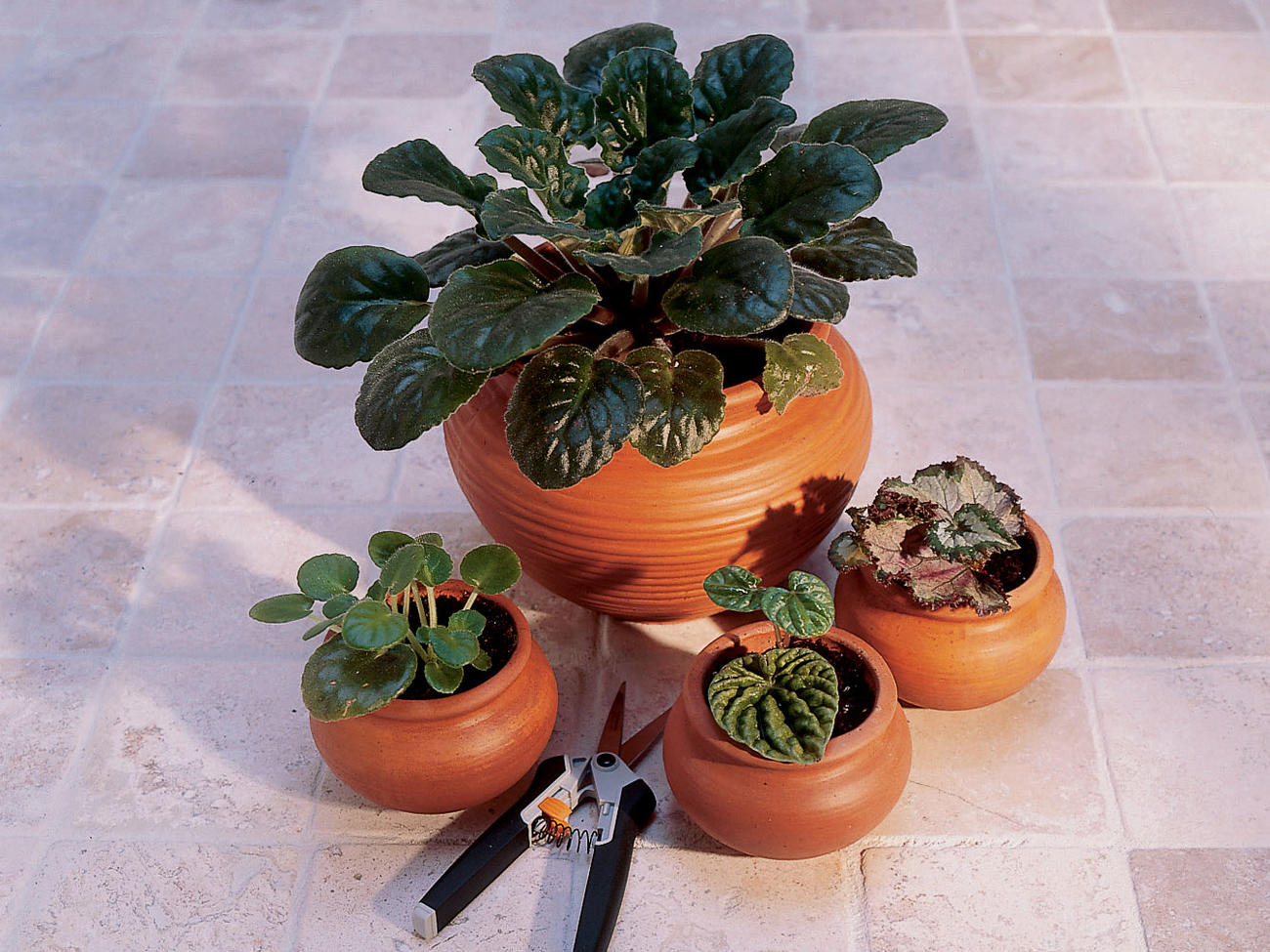
New Plants from Leaf Cuttings
Propagate plants quickly by cutting plant leaves

Thomas J. Story
Some fleshy-leafed house plants can be propagated quickly and easily from leaf cuttings—one of the best methods for ensuring identical new plants. Try this technique to expand your collection of African violets, Cape primroses, gloxinias, peperomias, some begonia species, and many succulents.
Leaf cuttings take at least six weeks to form new leaves, depending on conditions and the season (growth is faster in spring and summer).
TIME: A few minutes per pot
COST: 50 to 75 cents per pot
TOOLS AND MATERIALS
• 3- to 4-inch-diameter pots
• Propagating mix
• Pruning shears or sharp scissors
• A mother plant (those listed above are easy choices)
• Pencil
• Rooting hormone (optional)
• Propagation heat mat (optional)
• Small plastic cup
• Fertilizer
